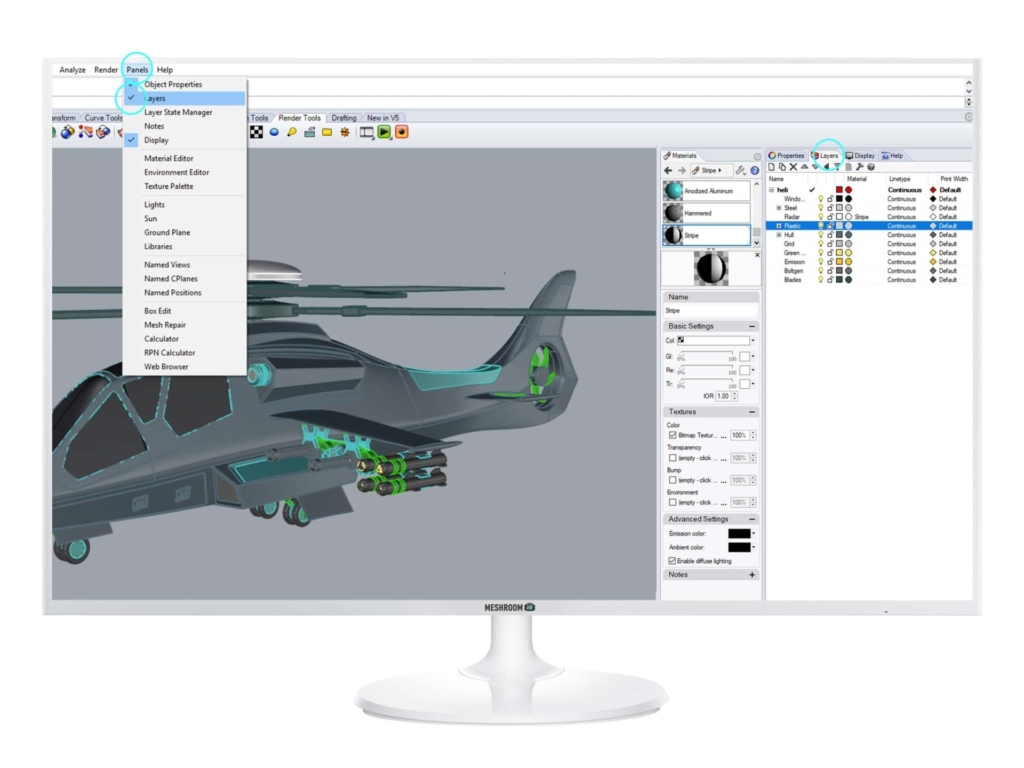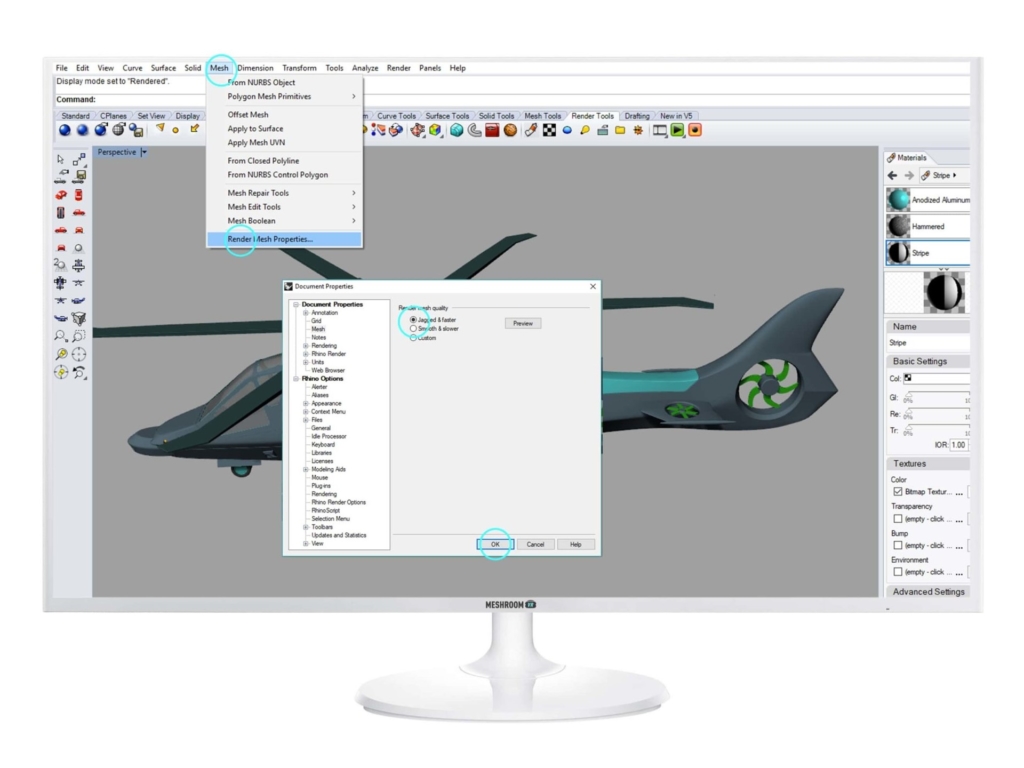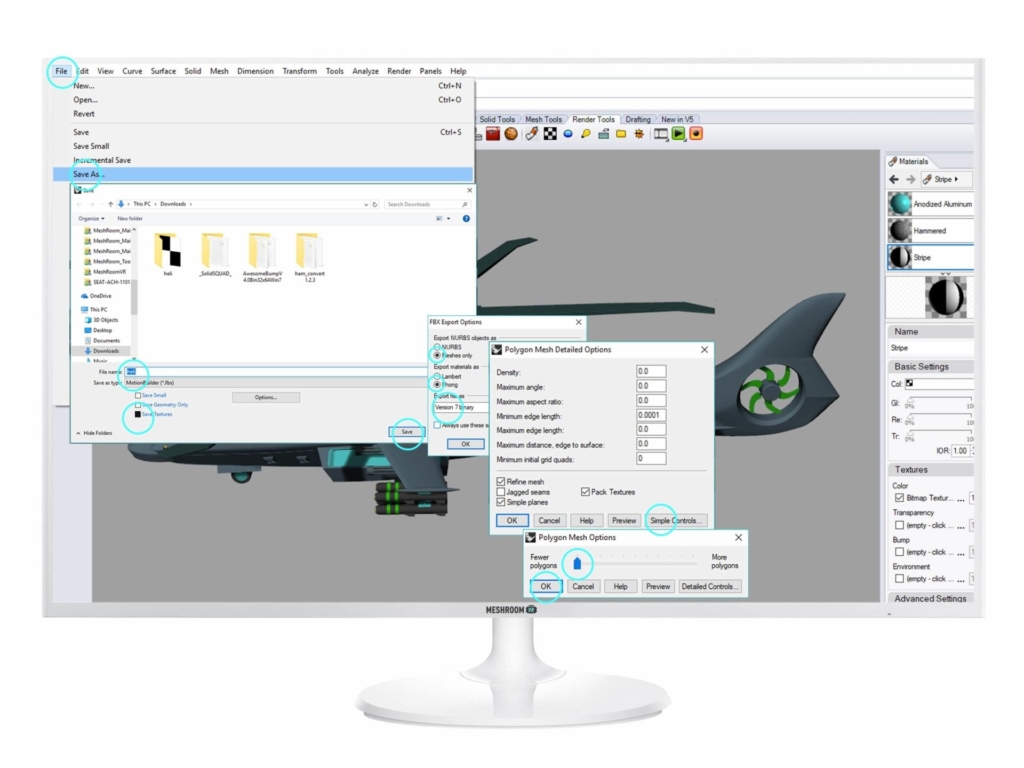Step 1: Apply materials
Add Rhino material to differentiate different parts.
Meshroom VR uses the different materials applied by Rhino to your model to identify the different parts. On each part, you will be able to drag’n’drop a Weviz material.
Be sure that each part of your 3D project is associated to a material.
Go to Panels > Layers.
Note: A complete white model (all parts with the same color/texture) will be considered as a model having one part. Thus is will not be possible to textures different elements of it in Meshroom VR.
*It is those colors and textures that Meshroom VR will use to identify the different parts of your model.
Step 2: Export quality
Do not triangulate too much!
Unlike in rapid prototyping, low tesselation provides the best results in VR.
To set the tesselation level:
Go into > Mesh > Render Mesh Properties.
Choose > Mesh.
Check Jagged & faster.
Click on OK.
*By exporting your model, you will convert it to a triangle mesh. The quantity of triangle generated is called tesselation.
Step 3: FORMAT .FBX
Export only what you need!
Remove all useless objects from your export. If you want to validate the exterior shape of a design, it would be useless to import all the machinery hidden inside!
To export your 3D project:
Go to > File >Save as.
Select MOTIONBUILDER (.FBX).
Check on Save textures.
Click on Save.
In «FBX Export Options» new window, stay in Meshes only / Phong / Version 7 binary.
A «Polygon Mesh Detailed options» window appears, click on Simple controls.
Then move the cursor down 2 steps and click on ok to finish.
*Only links to textures are in the FBX (and not the texture itself). So these textures must be in the same place at import time, otherwise, there are not found.



